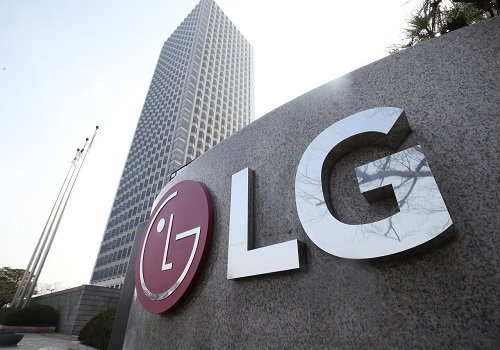Jeera trading range for the day is 26900-28840 - Kedia Advisory

Follow us Now on Telegram ! Get daily 10 - 12 important updates on Business, Finance and Investment. Join our Telegram Channel
Gold:
Gold prices experienced a decline of -0.82%, settling at 61505, as strong consumption in December continued to support robust economic activity. The U.S. Census Bureau reported a 0.6% increase in retail sales for the month, surpassing expectations and indicating healthy consumer spending. However, recent comments from multiple Federal Reserve officials have prompted market participants to adopt a more realistic view of the potential timing and depth of interest rate cuts in the upcoming year. Fed Governor Christopher Waller reinforced Chairman Powell's stance, emphasizing that while interest rate cuts are likely in the coming year, the central bank can afford to take a gradual approach to monetary policy relaxation. New York Fed President John Williams highlighted that rate cuts would only be considered when the Fed is confident that inflation is substantially moving back toward its 2% target. Cleveland Fed President Loretta Mester suggested that a rate cut in March might be premature, indicating the central bank's cautious approach. Other Fed officials, including Richmond Fed President Tom Barkin and Chicago Fed President Austan Goolsbee, underscored the need for more data and conviction regarding inflation reaching the Fed's 2% goal before considering rate cuts. Technically, the market showed signs of long liquidation, with a 9.5% decrease in open interest to 7467. Gold finds support at 61280, and a breach could lead to a test of 61050 levels. Resistance is likely at 61915, and a breakout could push prices towards 62320.
Trading Ideas:
# Gold trading range for the day is 61050-62320.
# Gold dropped as solid consumption in December supports healthy economic activity.
# Retail sales increased 0.6% in December, beating economist expectations.
# Federal Reserve officials have provided a more realistic viewpoint on the timing and depth of interest rate cuts.
Silver:
Silver faced a decline of -0.74%, settling at 72093, as the precious metal's safe-haven appeal waned amid a stronger dollar and rising Treasury yields. The market sentiment shifted as investors reassessed the potential timeline for interest rate reductions by the Federal Reserve (Fed). This reevaluation was triggered by the release of a robust Consumer Price Index (CPI) report for December and hawkish comments from European Central Bank (ECB) officials. The dollar reached one-month highs as rate cut expectations were tempered. Joachim Nagel of the ECB emphasized that inflation remains elevated, and it's premature to discuss cutting interest rates. ECB Governing Council member Robert Holzmann also warned that rate cuts may not be on the horizon for the year. These statements recalibrated broader market expectations, impacting silver's performance. Investors are awaiting cues about potential Fed rate cuts following the release of the monthly US Retail Sales and Industrial Producer data. The outcome of these reports, expected on Wednesday, will likely shape market expectations. Retail Sales are anticipated to show higher growth at 0.4%, compared to a 0.3% increase in November. Consumer spending, excluding automobiles, is projected to maintain a steady pace of 0.2%. From a technical standpoint, the silver market is undergoing fresh selling pressure, with a notable increase in open interest by 6.07% to settle at 23762. The price decline of -534 rupees signals a bearish sentiment. Silver is currently finding support at 71855, and a potential breach could lead to a test of 71620 levels. On the upside, resistance is expected at 72480, with a move above potentially leading to prices testing 72870.
Trading Ideas:
* Silver trading range for the day is 71620-72870.
* Silver declined as a stronger dollar and an uptick in Treasury yields weighed.
* Price has been hit hard amid uncertainty over US Retail Sales and Industrial Production data.
* A strong US Retail Sales data would provide more room for the Fed to maintain higher interest rates.
Crude oil:
Crude oil prices experienced a decline of -0.52%, settling at 5972, influenced by economic growth concerns in China and a strengthening U.S. dollar, which dampened investor risk appetite. China's economic growth, though slightly below expectations, raised concerns about future demand for oil. OPEC maintained its forecast for relatively strong growth in global oil demand in 2024 and provided an early prediction for a "robust" increase in oil use in 2025, led by China and the Middle East. OPEC's monthly report indicated an expected rise of 1.85 million barrels per day in global oil demand in 2025, with a growth projection of 2.25 million bpd for 2024. This early 2025 prediction is a departure from OPEC's usual practice, aimed at offering long-term guidance to the market. In the U.S., oil output from top shale-producing regions is set to decline in February for the fifth consecutive month, according to the U.S. Energy Information Administration (EIA). Despite this decline, the Permian region is expected to reach a record-high output of 5.974 million bpd. However, the rate of increase is projected to be the smallest since June. The EIA's Short Term Energy Outlook (STEO) also forecasts a record U.S. crude production of 13.21 million bpd in 2024. Technically, the market displayed signs of long liquidation, with a 32.49% drop in open interest to 3186. Crude oil finds support at 5887, and a breach could lead to a test of 5803 levels. Resistance is likely at 6036, with a move above potentially pushing prices towards 6101.
Trading Ideas:
# Crudeoil trading range for the day is 5803-6101.
# Crude oil fell due to concerns about demand amid China’s lower economic growth
# OPEC predicts relatively strong growth in global oil demand in 2024 and a "robust" increase in 2025
# Oil output in the Permian region is set to reach a record high of 5.974 million bpd.
Natural gas:
Natural gas prices experienced a decline of -2.95%, settling at 236.5, driven by forecasts of warmer-than-normal weather in late January, leading to expectations of reduced demand and increased output. The prospect of milder temperatures and a decrease in heating-related gas consumption weighed on prices. The decline in natural gas prices was also influenced by the drop in the amount of gas flowing to U.S. liquefied natural gas (LNG) export plants, reaching a three-month low. However, spot power and gas prices surged to multi-year highs due to extremely cold weather, which constrained gas supplies and was anticipated to drive daily demand to a record high. According to financial company LSEG, average gas output in the Lower 48 states fell to 103.9 billion cubic feet per day (bcfd) in January from a monthly record of 108.0 bcfd in December. Despite this decline, the daily output on Monday reached a 12-month low of 92.8 bcfd, a drop of 14.9 bcfd from Jan. 8-15. Meteorologists projected a shift in temperatures from colder than normal from Jan. 16-21 to mostly warmer than normal from Jan. 22-31, leading to expectations of reduced heating-related gas demand. LSEG forecasted a drop in U.S. gas demand in the Lower 48, including exports, from 154.1 bcfd this week to 138.8 bcfd next week. Technically, the market exhibited signs of long liquidation, with a 20.02% drop in open interest to 12084. Natural gas finds support at 230.4, and a breach could lead to a test of 224.3 levels. Resistance is likely at 241.8, and a move above could see prices testing 247.1.
Trading Ideas:
# Naturalgas trading range for the day is 224.3-247.1.
# Natural gas dropped due to forecasts of decreased demand and increased output.
# The amount of gas flowing to U.S. LNG export plants reached a three-month low, further impacting prices.
# Gas output in the Lower 48 states fell to 103.9 bcfd in January from a monthly record of 108.0 bcfd in December.
Copper:
Copper prices experienced a marginal decline of -0.31%, settling at 713.3, driven by various factors including reports of Antofagasta's 2% increase in 2023 copper production to 660,600 metric tons. The rise was attributed to improved water availability at its flagship project, Los Pelambres. Despite this positive development, Antofagasta's 2024 output outlook, ranging from 670,000 to 710,000 tons, fell short of initial estimates announced in October. In China, a key player in the copper market, economic growth slightly missed forecasts, raising concerns about the property sector, particularly a 23% plunge in property sales measured by floor area in December. Other economic indicators for the same period showed sluggish retail sales growth and tepid investment growth, although industrial output exhibited signs of improvement. Chinese Premier Li Qiang, however, remained optimistic about the economy, stating it had rebounded and moved upward, estimating a 5.2% growth in 2023, surpassing the official target of 5%. At the World Economic Forum in Davos, Li emphasized the Chinese economy's ability to navigate fluctuations, with an unwavering overall trend of long-term growth. From a technical standpoint, the copper market witnessed long liquidation, with a -4.58% drop in open interest, settling at 5085. Prices experienced a decline of -2.2 rupees. Presently, copper finds support at 711, with a potential test of 708.7 levels if breached. On the upside, resistance is anticipated at 715.8, and a move above could lead to prices testing 718.3.
Trading Ideas:
# Copper trading range for the day is 708.7-718.3.
# Copper prices dropped after Antofagasta's 2023 copper output up 2%
# Chinese Premier Li Qiang said the Chinese economy had rebounded and moved upward
# HSBC expects a lower surplus in the copper market and increases 2024-2027 copper price forecasts by 1-7%.
Zinc:
Zinc closed lower by -0.35% at 224.8, facing headwinds from a stronger dollar and concerns about demand in China, the top consumer of the metal. The dollar gained ground following hawkish remarks from central bankers, which tempered expectations for interest rate cuts. Market participants awaited key statements from influential figures like Christopher Waller of the U.S. Federal Reserve. China's central bank chose to keep the medium-term policy rate unchanged, contrary to market expectations for a cut. The decision was influenced by a weaker currency, limiting the immediate potential for monetary easing to stimulate the economy. These developments contributed to a cautious atmosphere in the zinc market. The International Lead and Zinc Study Group (ILZSG) reported that the global zinc market shifted to a deficit of 71,600 metric tons in November 2023, compared to a deficit of 62,500 tons in October. However, data for the first 11 months of 2023 indicated an overall surplus of 211,000 tons, in contrast to a deficit of 86,000 tons during the same period in 2022. Nyrstar, wholly owned by Trafigura, announced the suspension of its Budel zinc smelting operations in the Netherlands later this month. The decision is attributed to high energy costs and challenging market conditions. Technically, the zinc market is witnessing long liquidation, marked by a drop in open interest by -7.6% to settle at 2637. Despite the decrease in open interest, prices declined by -0.8 rupees. Zinc is currently finding support at 223.9, with a potential break below possibly testing 223 levels. On the upside, resistance is likely at 225.8, and a move above could see prices testing 226.8.
Trading Ideas:
* Zinc trading range for the day is 223-226.8.
* Zinc dropped weighed down by a stronger dollar and concerns about China’s demand
* The global zinc market deficit increased to 71,600 metric tons in November 2023 from a deficit of 62,500 tons in October.
* China's central bank left the medium-term policy rate unchanged, defying market expectations for a cut
Aluminium:
Aluminium prices experienced a decline of -1.17% to settle at 198.75, primarily attributed to China's record-breaking primary aluminium output in 2023. Despite the 3.7% growth to 41.59 million metric tons, the slowed growth rate resulted from weather-related production constraints in the southwest. December's production of 3.59 million tons, up 4.9% from the previous year, was driven by robust operations in key producing regions and the initiation of new projects, particularly in Inner Mongolia. Concerns surround the People's Bank of China potentially easing policies further due to the yuan's renewed depreciation. China's fourth-quarter economic growth was slightly slower than expected, marked by a deepening property crisis, deflationary pressures, and weak demand. The nation's struggle for a robust post-COVID bounce is compounded by a protracted real estate slump, diminished consumer and business confidence, and escalating local government debts. Analysts are anticipating additional stimulus measures from Beijing to address these challenges. From a technical perspective, the market witnessed long liquidation, with a 10.14% drop in open interest, settling at 3695. Prices experienced a decline of -2.35 rupees. Currently, Aluminium finds support at 197.9, and a breach could lead to a test of 197.1 levels. On the upside, resistance is anticipated at 200.1, and a move beyond that could propel prices to test 201.5.
Trading Ideas:
# Aluminium trading range for the day is 197.1-201.5.
# Aluminium dropped as China 2023 aluminium output up 3.7% y/y
# HSBC maintains 2024-2025 aluminium LME price assumptions of $2,300/t and $2,400/t.
# HSBC continues to estimate a modest surplus in the global aluminium market in 2023-25.
Cotton:
Cotton prices experienced a decline of -0.36%, settling at 55100, driven by global factors such as a reduction in world consumption forecasts for the 2023/24 season. The decrease in consumption projections for key cotton-producing countries, including India, Indonesia, Pakistan, Uzbekistan, and Turkey, contributed to the negative sentiment. Additionally, world ending stocks for the same period are expected to increase by 2.0 million bales, primarily due to higher beginning stocks, production levels, and lower consumption. The Cotton Association of India (CAI) maintained its estimates for domestic cotton consumption in the 2023-24 season at 311 lakh bales, with pressing estimates at 294.10 lakh bales. The CAI's observations are based on inputs from members across 11 cotton-growing state associations. Despite Brazil achieving record-high cotton production in the 2022-23 season, global demand remained sluggish, leading to bloated inventories and a reduction in cotton prices worldwide. Reports of a decline in pink bollworm infestation in the Indian cotton crop were noted, with infestation dropping from 30.62% in 2017-18 to 10.80% in 2022-23. The infestation is observed across cotton-growing regions in the north, central, and south zones of the country. The International Cotton Advisory Committee (ICAC) projected that global cotton production is expected to surpass consumption for the second consecutive year. Technically, the cotton market witnessed long liquidation, with a 2.45% decrease in open interest to 199. Cottoncandy finds support at 54840, and a breach could lead to a test of 54570 levels. Resistance is likely at 55340, with a potential breakout pushing prices towards 55570.
Trading Ideas:
# Cottoncandy trading range for the day is 54570-55570.
# Cotton dropped as world consumption in 2023/24 is forecast 1.3 million bales lower than last month.
# World 2023/24 ending stocks are forecast 2.0 million bales higher this month driven by higher beginning stocks.
# World production is 260,000 bales higher with China’s crop up 500,000 bales and Argentina’s production higher as well
# In Rajkot, a major spot market, the price ended at 26454.3 Rupees dropped by -0.2 percent.
Turmeric:
Turmeric prices saw a decline of -1.28%, settling at 13718, influenced by slower buying activities ahead of the anticipated release of stocks before the onset of new crops in January 2024. However, the downside is expected to be limited due to weaker production prospects, tighter stocks in the market, and improved export opportunities. The pressure on prices is partially alleviated by favorable weather conditions, leading to improved crop conditions. The Turmeric Board established by PM Modi in Telangana has sparked concerns among farmers in Maharashtra over the headquarters' location. Despite these concerns, the crop condition remains satisfactory, and the harvest is expected to be ready from January to March. Current levels of buying activity and decreasing supplies are anticipated to sustain price stability. The demand for turmeric has witnessed an increase in both developed and emerging nations, leading to a 25% rise in exports. Expectations of a 20–25% decline in turmeric seeding, particularly in regions like Maharashtra, Tamil Nadu, Andhra Pradesh, and Telangana, are attributed to farmers shifting priorities. October 2023 exports increased by 11.58% compared to September 2023 but showed a 9.30% drop compared to October 2022. Technically, the market displayed signs of fresh selling, with a 1.77% increase in open interest to 12,680. Turmeric finds support at 13500, and a breach could lead to a test of 13284 levels. Resistance is likely at 13984, and a breakout could push prices towards 14252.
Trading Ideas:
# Turmeric trading range for the day is 13284-14252.
# Turmeric dropped as buying activities has been slower in expectation of new crops.
# However, downside seen limited amid weaker production prospects and tighter stocks in the market.
# The current levels of buying activity and decreasing supplies will sustain price stability.
# In Nizamabad, a major spot market, the price ended at 12887.6 Rupees dropped by -0.25 percent.
Jeera:
Jeera (cumin) faced a notable decline, settling down by -1.21% at 27645, primarily driven by higher production prospects in key cultivating states like Gujarat and Rajasthan. The current rabi season has witnessed a remarkable surge in jeera acreage, reaching a four-year high. Farmers, encouraged by record prices in the previous marketing season, expanded cultivation, showcasing a clear link between market prices and acreage. In Gujarat, jeera cultivation has witnessed a substantial 160% increase, covering 5.60 lakh hectares compared to 2.75 lakh hectares in the previous year, surpassing the normal acreage of 3.5 lakh hectares. Similarly, Rajasthan recorded a 25% increase in jeera cultivation, reaching 6.90 lakh hectares compared to 5.50 lakh hectares in the previous year. This surge in cultivation, driven by favorable prices, has contributed to the overall bearish sentiment in the market. Global demand for Indian jeera has faced challenges as buyers prefer alternative sources like Syria and Turkey due to comparatively higher prices in India. In October 2023, jeera exports decreased by 13.39% compared to September 2023 and a substantial 46.77% compared to October 2022, indicating a decline in international demand. The technical overview indicates that the market is currently under fresh selling pressure, with a 4.19% gain in open interest to settle at 1941. Prices have experienced a significant drop of -340 rupees. Jeera is finding support at 27270, and a breach below this level could lead to a test of 26900. On the upside, resistance is likely at 28240, and a move above could see prices testing 28840.
Trading Ideas:
# Jeera trading range for the day is 26900-28840.
# Jeera prices dropped due to higher production prospects
# In Gujarat, Cumin sowing witnessed very strong growth by nearly 103% with 530,030.00 hectares against sown area of 2022
# Stockists are showing interest in buying on recent downfall in prices triggering short covering.
# In Unjha, a major spot market, the price ended at 30807.9 Rupees gained by 0.34 percent.
Views express by all participants are for information & academic purpose only. Kindly read disclaimer before referring below views. Click Here For Disclaimer












 320-x-100_uti_gold.jpg" alt="Advertisement">
320-x-100_uti_gold.jpg" alt="Advertisement">










